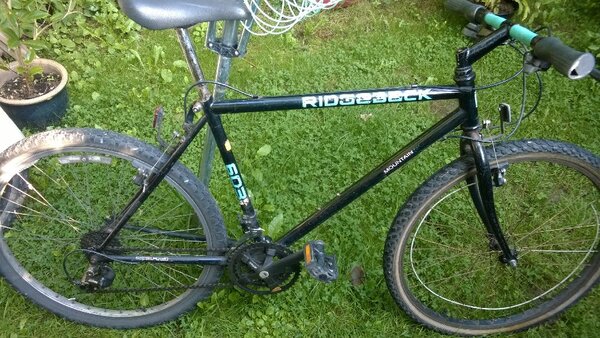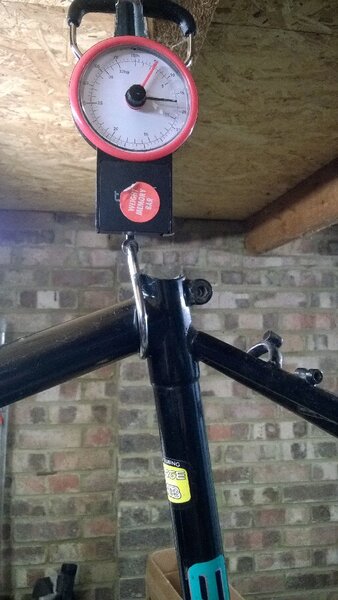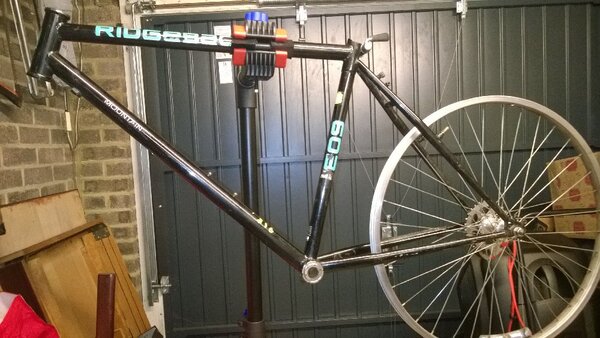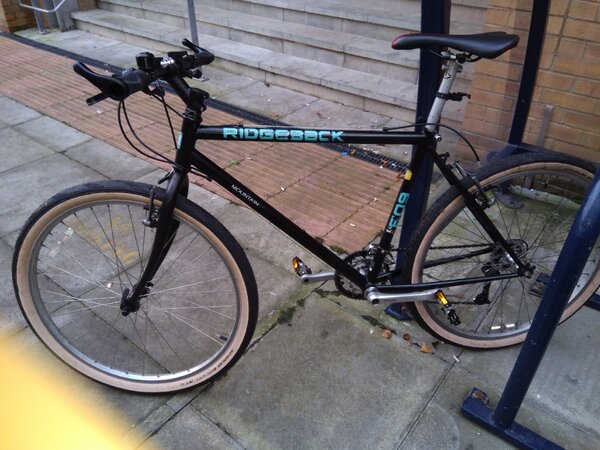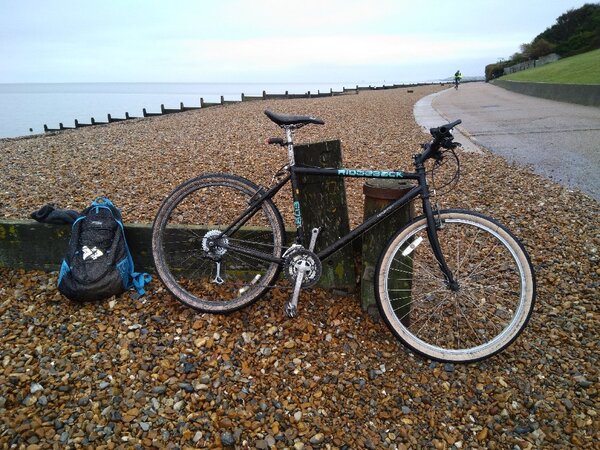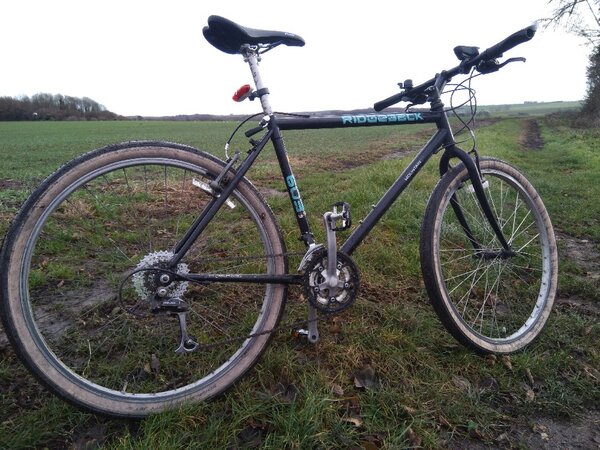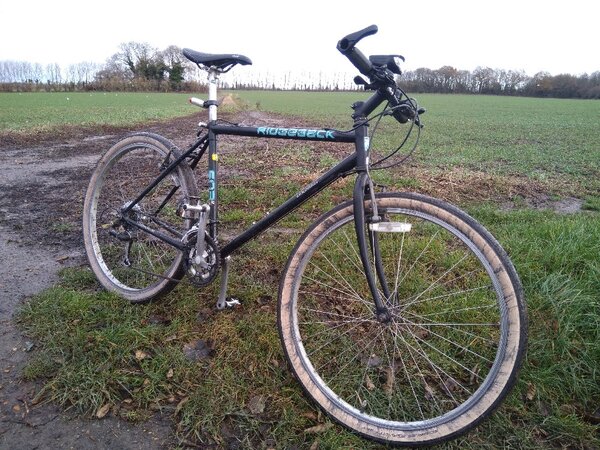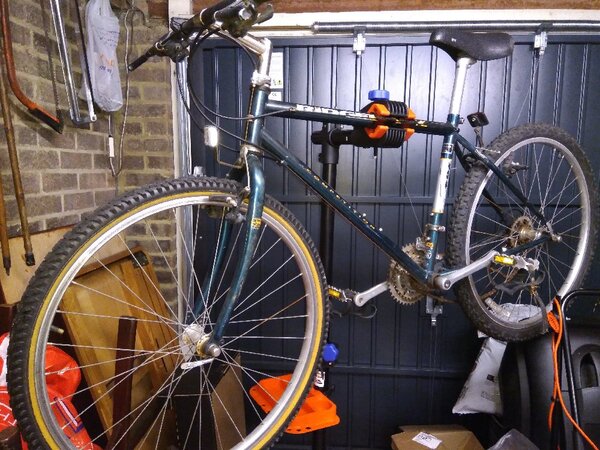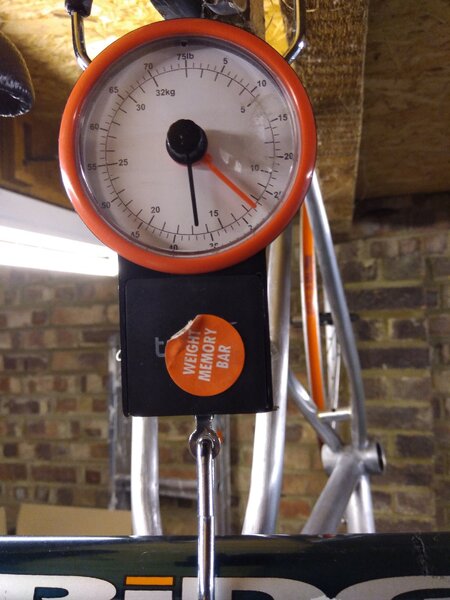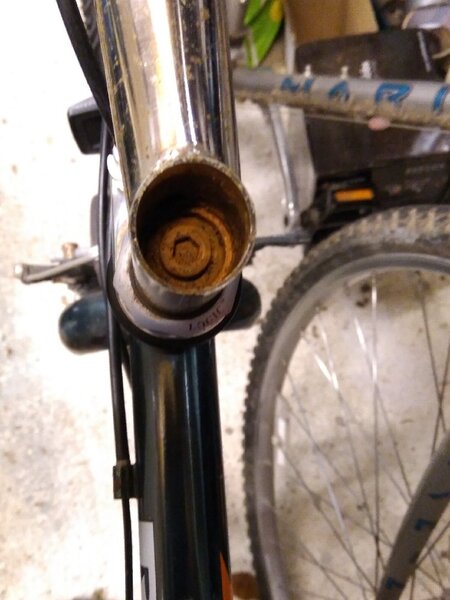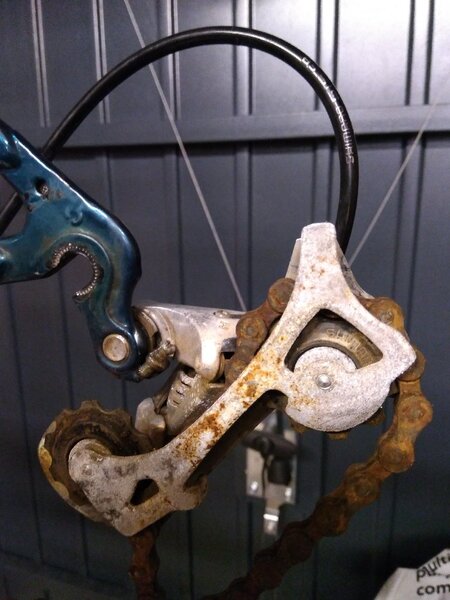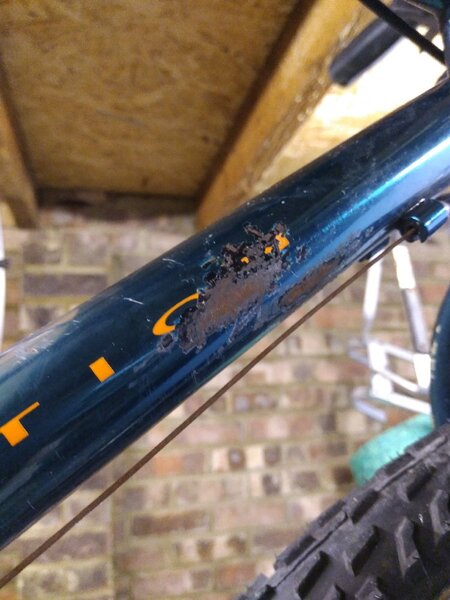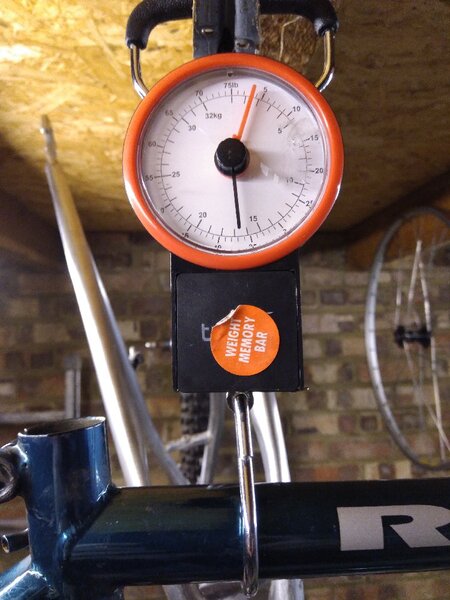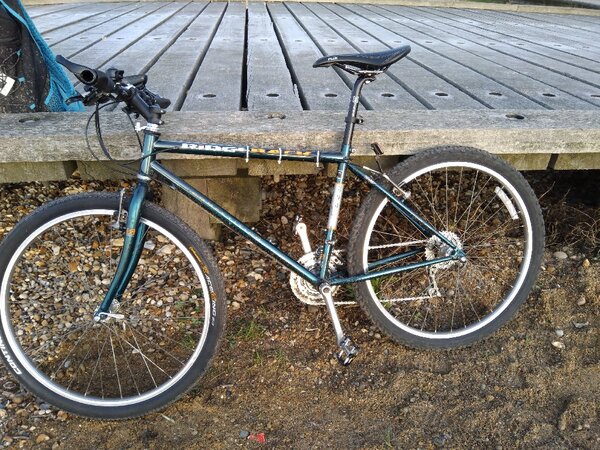CassidyAce
Senior Retro Guru
Tired of all those high end builds? The monotony of gleaming XT, titanium, boutique brands and desirable top end models. Well, here's a sight for sore eyes.
It was some time last summer when I locked up my new-ish mountain bike at a supermarket and just stared at an old nineties Ridgeback locked up next to it. My bike must have been worth ten times as much money but that Ridgeback just had something about it I liked - the blue paint job, the geometry, they just looked right. It was a 602 from 1993 or thereabouts I later discovered but, lowly or not, I liked the look of it. And there began my Ridgeback quest.
Now, I was very busy over the summer and various suitable Ridgebacks came and went on eBay, usually for silly, low prices, but I just didn't have the time or energy to put in the driving time to collect one. But I kept on looking . . . Until the end of August, when a 705RS appeared and sold for around £40 about 165 miles away. That bugged me! In a fit of frustration, I made a much shorter journey and splashed out a whole tenner - yes, last of the big spenders! - on a 1991 603GS. I'd told myself that I would never buy a low end bike again but I wanted a 90's Ridgeback and I got a 90's Ridgeback - and this, the 1991 catalogue says, was the top of the mountain series. The only problem was that the top of the mountain series is not very high in the grand scheme of things.
This was it:
But it was heavy, very heavy. And nothing much on it worked. And it needed lubrication, cleaning, rust-free braking surfaces . . . I went back to re-spraying an old Hardrock. Don't ask me why. It's a case of I've started so I'll finish, I think.
Anyway, when I was once again bored of re-spraying, I turned to the Ridgeback again. I stripped off every component, wondering what on earth to do with it and the closer I got to just the frame and forks, the more I liked it. The old zero-butted Tange tubing wasn't so bad after all. When it was down to just the frame and headset cups, I weighed it on some not-especially-accurate Asda travel scales: about 2.25Kg.
It could be worse. Now the rebuilding.
The 200GS derailleurs were not, actually, any heavier than some LX ones I had spare. Unfortunately, it turned out that the front one would switch from rings one to two, or two to three, but one all the way to three was too much for the poor old thing. In politically correct terms, it was 'laterally challenged'. The rear one, on the other hand, was all too happy skipping multiple gears. The LX derailleurs went on. The rear wheel was fine; the front got a no name but serviceable wheel. The original bars and stem weighed a whopping 840g together; they were replaced with some spare Halfords ones that weighed a total of 340g. Half a kilo gone, just like that. The 200GS chain set was very heavy, and ugly - on went an LX replacement. Anyway, what went on was what was lying spare - a mish mash: SD7 brakes, cheapo Shimano rapid fire shifter pods, City Jet tyres. And before long the old Ridgeback could ride again and it looked like this:
And it weighed about 12.3Kg according to the not-especially-accurate Asda travel scales. At a guess, 2kg-3Kg was lost, but the only original parts left attached to the frame and forks were the headset, bottom bracket and rear wheel. (Note: the 1991 Ridgeback catalogue says that the bottom bracket is protected from rust by a rubbery inner sleeve. In reality, it doesn't help; you just can't see the rust as easily!) It's not a bad ride: pretty quick, a little on the firm side but with some springiness noticeable. As a commuter, it's OK. And it's seen some dirt and rain.
And then I found another Ridgeback but that's for the next post . . .
It was some time last summer when I locked up my new-ish mountain bike at a supermarket and just stared at an old nineties Ridgeback locked up next to it. My bike must have been worth ten times as much money but that Ridgeback just had something about it I liked - the blue paint job, the geometry, they just looked right. It was a 602 from 1993 or thereabouts I later discovered but, lowly or not, I liked the look of it. And there began my Ridgeback quest.
Now, I was very busy over the summer and various suitable Ridgebacks came and went on eBay, usually for silly, low prices, but I just didn't have the time or energy to put in the driving time to collect one. But I kept on looking . . . Until the end of August, when a 705RS appeared and sold for around £40 about 165 miles away. That bugged me! In a fit of frustration, I made a much shorter journey and splashed out a whole tenner - yes, last of the big spenders! - on a 1991 603GS. I'd told myself that I would never buy a low end bike again but I wanted a 90's Ridgeback and I got a 90's Ridgeback - and this, the 1991 catalogue says, was the top of the mountain series. The only problem was that the top of the mountain series is not very high in the grand scheme of things.
This was it:
But it was heavy, very heavy. And nothing much on it worked. And it needed lubrication, cleaning, rust-free braking surfaces . . . I went back to re-spraying an old Hardrock. Don't ask me why. It's a case of I've started so I'll finish, I think.
Anyway, when I was once again bored of re-spraying, I turned to the Ridgeback again. I stripped off every component, wondering what on earth to do with it and the closer I got to just the frame and forks, the more I liked it. The old zero-butted Tange tubing wasn't so bad after all. When it was down to just the frame and headset cups, I weighed it on some not-especially-accurate Asda travel scales: about 2.25Kg.
It could be worse. Now the rebuilding.
The 200GS derailleurs were not, actually, any heavier than some LX ones I had spare. Unfortunately, it turned out that the front one would switch from rings one to two, or two to three, but one all the way to three was too much for the poor old thing. In politically correct terms, it was 'laterally challenged'. The rear one, on the other hand, was all too happy skipping multiple gears. The LX derailleurs went on. The rear wheel was fine; the front got a no name but serviceable wheel. The original bars and stem weighed a whopping 840g together; they were replaced with some spare Halfords ones that weighed a total of 340g. Half a kilo gone, just like that. The 200GS chain set was very heavy, and ugly - on went an LX replacement. Anyway, what went on was what was lying spare - a mish mash: SD7 brakes, cheapo Shimano rapid fire shifter pods, City Jet tyres. And before long the old Ridgeback could ride again and it looked like this:
And it weighed about 12.3Kg according to the not-especially-accurate Asda travel scales. At a guess, 2kg-3Kg was lost, but the only original parts left attached to the frame and forks were the headset, bottom bracket and rear wheel. (Note: the 1991 Ridgeback catalogue says that the bottom bracket is protected from rust by a rubbery inner sleeve. In reality, it doesn't help; you just can't see the rust as easily!) It's not a bad ride: pretty quick, a little on the firm side but with some springiness noticeable. As a commuter, it's OK. And it's seen some dirt and rain.
And then I found another Ridgeback but that's for the next post . . .
